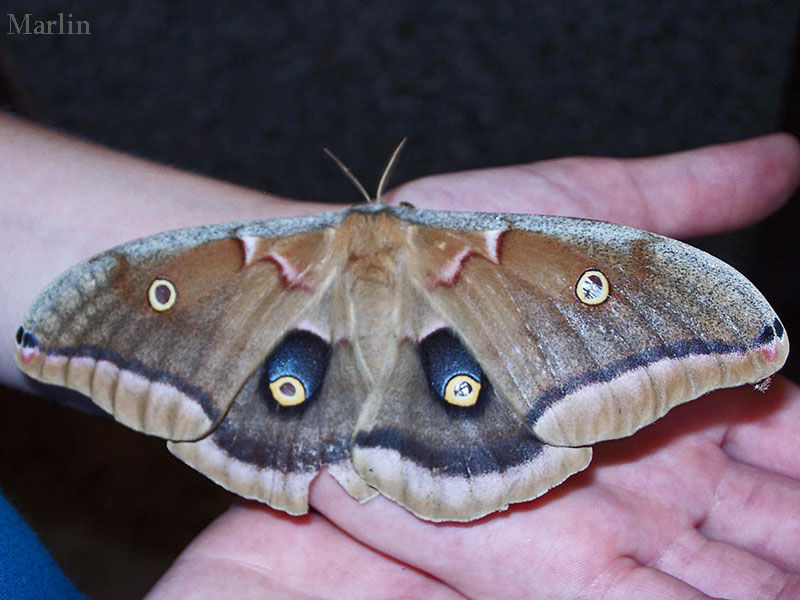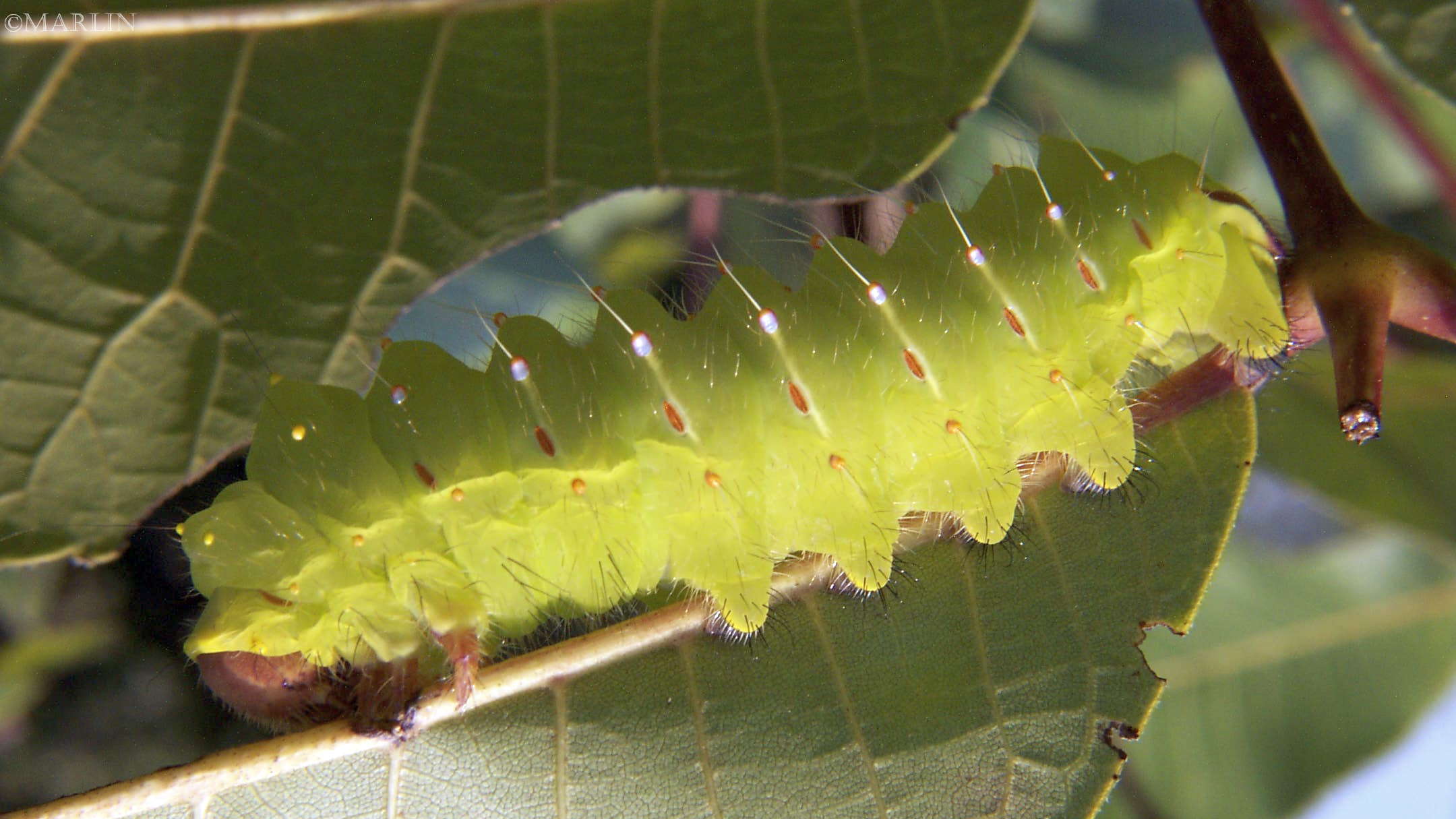Polyphemus Moth – Antheraea polyphemus

Family: Saturniidae – Giant silkmoths
Live adult moths and caterpillars photographed at Winfield, Illinois.
My son and I found this giant silkmoth bumping against the lights outside our local 7-11 store. Naturally, it was confused and stunned itself several times during collisions with plate-glass windows; we carried it to a dark area and successfully released it into the night. What a thrill to see & hold such a gigantic insect ! The polyphemus moth caterpillar (larval form) was also photographed at Winfield, Illinois in 2002.
Polyphemus moth adults, like others in the Saturniidae family, do not feed. Silkmoths use pheromones to locate each other when seeking mates. Females lay eggs on a wide variety of host plants – really an extensive list, as moth larvae go.
When the eggs hatch, small yellow caterpillars emerge. As the caterpillars age, they molt 5 times. Each instar is slightly different, but on their sixth and final instar they become a bright green color, with silver spots on their side. They feed heavily on their host plant and can grow up to 3-4 inches long. They then spin cocoons of brown silk, usually wrapped in leaves of the host plant. There are generally two broods throughout the United States, one that hatches in early spring and one that hatches in late summer.
This giant silkmoth gets its name from the large eyespots on its hindwings, referring to Polyphemus, the Cyclops of Greek mythology, who captured (and was eventually blinded by) Odysseus in Homer’s epic poem, The Odyssey.
Polyphemus moth adults, like others in the Saturniidae family, do not feed. Silkmoths use pheromones to locate each other when seeking mates. The life cycle of the moth is much like any other saturniidae species. It lays flat, light brown eggs on the leaves of a number of host plants, including:
- Betula, (Birch)
- Salix, (Willow)
- Quercus, (Oak)
- Acer, (Maple)
- Carya, (Hickory)
- Fagus, (Beech)
- Gleditsia triacanthos, (Honey locust)
- Juglans, (Walnut)
- Pyrus, (Peach)
- Prunus, (Genus of some fruit trees)
- Sassafras
- Citrus, (Orange, Grapefruits, Lemons, Limes, etc)
- Ulmus americana, (American Elm)
Moths Index | Moths | Butterflies Main | Butterflies Index | Skippers
Tree Encyclopedia / North American Insects & Spiders is dedicated to providing family-friendly educational
resources for our friends around the world through large images and macro photographs of flora and fauna.


